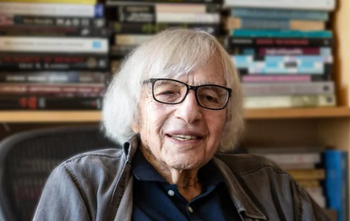
Grief, Mourning-and the Denial of Death
In today’s world, we are witnessing a de-emphasis and depersonalization of how the bereaved experience the death of a loved one. In fact, the occasion of death is frequently referred to as a “celebration,” despite the pain and suffering that can occur. Death is not an occasion for a celebration. Death is a time for mourning by family and friends. Death is a loss-not only to the deceased, who lost everything, but to all those who care about the deceased.
The usual procedure for a funeral or memorial service in today’s world begins with the attendees arriving at a set time, followed by the mourners’ lining up in the chapel or other setting and cordially greeting one another.
In the Jewish tradition in which I was raised, the rabbi speaks to the mourners, either on the day of the services or the evening before, and gathers biographical information regarding the deceased. In many cases, the rabbi didn’t know the deceased or if he did, it was on a superficial basis. At the service, the rabbi delivers a sermon, summarizing the individual’s life as told to him, usually including some Biblical references such as the twenty-third psalm and a few prayers. Then a relative or a close friend may make some statements. Following that, the funeral director instructs the group on how to proceed to the cemetery and where the shiva will be held. (“Shiva” refers to the week-long mourning period in Judaism, for first-degree relatives of the deceased.)
The service is conducted before a closed casket; or, in the case of a cremation, some pictures are displayed, and in these circumstances, there is no burial. (Orthodox Judaism does not permit cremation, but the practice is permitted by many Reform rabbis.)
On arriving at the cemetery, the mourners gather under a tent and the pall-bearers wheel the casket toward the pre-prepared open grave, which has an installed concrete base. The casket is then placed on a gurney-like structure over the grave. The rabbi says a prayer or prayers, places a black ribbon on the clothing of each of the mourners, cuts the ribbon, and the casket is then lowered by cemetery employees. After the casket is in the concrete casement, some of the mourners shovel dirt on the casket (usually 3 scoops each). When all the people who want to shovel have finished, everyone leaves and some go to the shiva home where, after washing their hands, they find a rather elaborate feast waiting.
The mourners sit around the dining area and talk. As is often the case in other religious traditions, the usual post-burial conversations include political events, how the stock market is doing, the latest sport stories, general news of the day, and perhaps some personal vignettes about themselves or their children’s activities. There is very little talk regarding the deceased, and all seem to be in fairly joyous mood and in good spirits. But on occasion, someone in the crowd may shed a tear, and express praise for how beautifully the rabbi (or minister) spoke during the service.
In today’s world, we are witnessing a de-emphasis and depersonalization of how the bereaved experience the death of a loved one. In fact, the occasion of death is frequently referred to as a “celebration,” despite the pain and suffering that can occur. Death is not an occasion for a celebration. Death is a time for mourning by family and friends. Death is a loss-not only to the deceased, who lost everything, but to all those who care about the deceased.
Some mourning rituals nowadays involve a feast that frequently includes alcoholic beverages-more a party than a sad occasion! This forces the mourning process to become an internalized, psychologically private affair-a solitary experience, rather than a shared occasion. Mourning hides behind a closed door and lacks the closeness and intimacy that should be shared. Under these conditions, the mourners avoid facing the unpleasant facts of putrefaction and decay, which the body inevitably undergoes. Instead, death is viewed as a “beautiful” experience. The realities of the body’s decay are obscured by embalming, flowers, fancy caskets, and a superficially joyous mood.
Today, one no longer expresses grief in public. Men and women behave “rationally” and exercise “self-control” during mourning, as proof of their will power and maturity. If grief is expressed openly for a “prolonged” time (more than about 60 days), it is interpreted as a refusal to accept reality-and, by some, as “pathological.”
I reject this attitude. I think it is wrong and psychologically damaging to the mourner. In contrast, I believe the Jewish religious tradition is psychologically healthy. It involves an initial mourning period of 7 days (shiva), during which a prayer known as the “mourner’s kaddish” is recited by the bereaved. Shiva is followed by a period of mourning known as shloshim, which extends for 30 days from the burial. For those grieving the death of a parent, an additional year of mourning is required. I believe these extended periods of mourning have much to offer, and show that we are souls and spirits more than mere flesh. In this mourning process, religious belief and tradition is in harmony with scientific knowledge regarding the need for adequate time to grieve.1
Finally, speaking of science, I believe we came from stardust, and that with death, we return to dust-only to be “re-circulated.” Could it be that, in this sense, there is a kind of afterlife, as so many religious traditions have held?
Reference1. Zisook S, Shear K. Grief and bereavement: what psychiatrists need to know. World Psychiatry. 2009;8:67-74.
For more details on Jewish mourning practices, see:
Newsletter
Receive trusted psychiatric news, expert analysis, and clinical insights — subscribe today to support your practice and your patients.

















